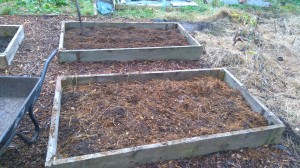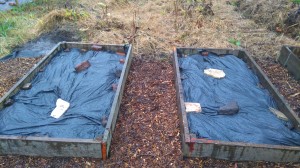The latest video in my allotment diary series where I build two compost bins from pallets. It was pretty easy to build and I was surprised it only took about an hour (including stopping to make the videos) so it isn’t too hard work. It is, however, wonky when compared to the greenhouse because I was following the line of the road, which curves. Whilst it may not win design awards it is functional and it does not spill out on to the road.
I’ve used 5 pallets for the compost bin plus two additional pallets for doors so I can pile the compost higher. The compost is direct on to the soil to encourage worms into it to help break the compost down. There’s rather a lot and there will be more. The larger roots aren’t broken down yet and they may end up being removed before I use the compost as I am not sure they will break down in time.
Now this is done, and the compost pile moved, I can start work digging the other end of the allotment where the compost pile was and building some raised beds there.


























